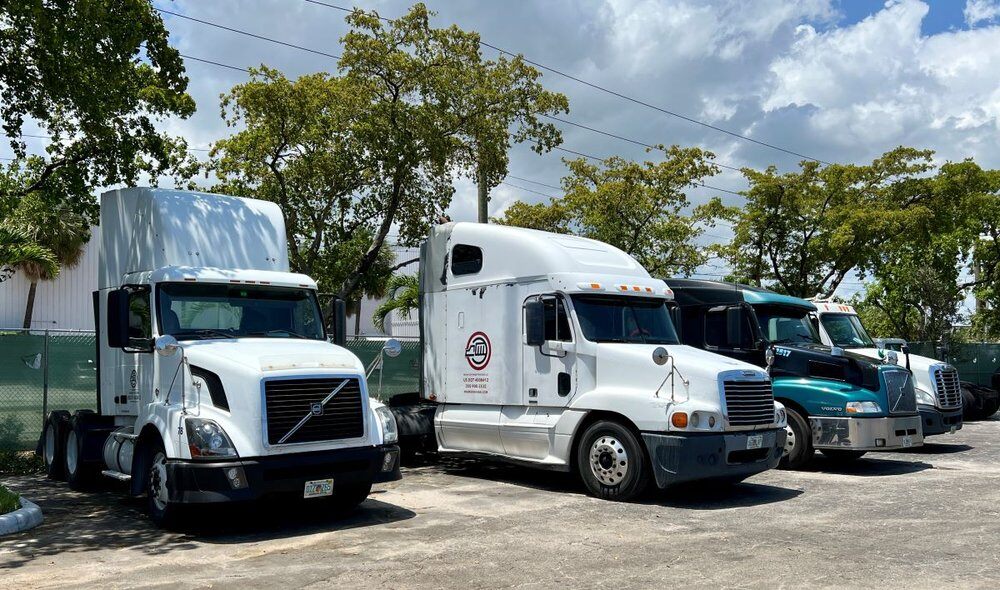Truck Driver Shortage: The Reality of the Trucking Industry
The United States faces a growing truck driver shortage that is squeezing nationwide capacity and reshaping freight strategies from the Port of Miami to Pacific gateways. Understanding how this driver shortage affects truck availability, pay structures, and delivery timelines helps logistics managers build resilient supply chains.
1. What Is the Current Truck Driver Shortage and Why Does It Matter?
Industry analysts estimate the driver shortage topped 80,000 positions last year, and projections show the gap could exceed 160,000 by 2030 if recruiting trends stay flat. Fewer available truck drivers means higher transportation costs, longer transit windows, and increased competition for reliable capacity across the country.
For Miami importers, container pickups at the port risk delay when drayage fleets cannot assign a qualified trucker to every load. A single missed gate appointment triggers port storage charges, slows warehouse scheduling, and hurts on-time performance to retailers throughout the United States.
2. How Does the Truck Driver Shortage Impact Miami Drayage Capacity?
Truck demand at the Port of Miami spikes whenever multiple vessels berth back-to-back. With fewer drivers in the local labor pool, drayage company fleets struggle to clear containers before free-time expires. Costs rise as chassis dwell longer and detention accrues. MiamiDrayage.com mitigates risk with:
-
Dedicated driver pools positioned near port gates
-
Flexible shift scheduling that maximizes limited driver hours
-
Real-time dispatch tools that reroute capacity to hot loads
These tactics help shippers meet retailer delivery windows even as the truck driver shortage tightens drayage availability.
3. Why Are Fewer New Drivers Graduating from Trucking Schools?
Enrollment at many trucking school programs remains below pre-pandemic levels. Young workers often prefer flexible gig options over a class A CDL career that keeps them away from home for days at a time. Rising tuition and insurance hurdles further deter prospects.
Miami-area carriers partner with local colleges to sponsor tuition and guarantee job placement, but competition from construction and last-mile courier work still siphons candidates. Until marketing campaigns make trucking careers more attractive, the inflow of new drivers will lag freight demand.
4. Can Higher Truck Driver Pay Solve the Capacity Problem?
Many carriers boosted pay more than 18 percent last year, yet unseated tractors still line yard fences. While better wages help, they alone cannot erase lifestyle concerns—especially long days on jammed I-95 and unpredictable port queues.
MiamiDrayage.com tackles compensation and scheduling together: competitive mileage rates plus “home-nightly” lanes that keep drivers close to family. This balanced approach improves retention and stabilizes drayage service levels.
5. How Does Amazon’s Shipping Model Influence Driver Demand?
Amazon and other e-commerce giants accelerate fulfillment cycles, pushing more freight onto road networks. Peak season demand concentrates drivers on specific corridors, draining capacity from drayage markets such as South Florida.
To adapt, Miami shippers integrate cross-dock transfers at our warehouse near port gates. Consolidating multiple LTL orders into fewer truck loads relieves driver pressure and slashes per-mile costs during surge periods.
6. What Retention Strategies Keep Drivers on the Road and Home More Often?
Driver feedback shows schedule control outranks bonus payouts. Top retention tactics include:
-
Home-nightly routes using regional loops around South Florida
-
Paid wait-time policies when port congestion stalls progress
-
Upgraded tractor amenities that reduce fatigue on the road
Carriers that combine lifestyle incentives with respectable wages outperform competitors in a tight labor market.
7. How Are Trucking Companies Using Technology to Offset Labor Gaps?
Route-optimization software increases asset turns, allowing the same number of truck drivers to move more freight per shift. MiamiDrayage.com’s dispatch platform pairs incoming container availability with chassis and driver status, eliminating deadhead miles. Telematics simplify compliance and reduce paperwork so drivers spend less cab time on admin tasks and more on revenue miles.
8. Is the Truck Driver Shortage Different on the East Coast vs. Pacific Ports?
West Coast labor challenges at major gateways drive volume toward East Coast ports, further squeezing Miami driver capacity. Meanwhile, Pacific ports still face their own shortage, creating a nationwide tug-of-war for qualified drivers. Shippers importing via South Florida gain reliability by securing annual drayage contracts with agile fleets instead of relying on spot-market pricing swings.
9. How Can Shippers Partner with a Miami Drayage Company to Secure Capacity?
-
Book early: Reserve truck slots as soon as vessel ETAs post.
-
Share forecasts: Provide quarterly volume projections so the company can stage assets.
-
Leverage tech: Subscribe to MiamiDrayage.com’s customer portal for real-time driver assignments.
-
Align hours: Coordinate warehouse receiving shifts with port appointments to avoid after-hours fees.
Proactive collaboration ensures consistent service despite the ongoing truck driver shortage.
10. Key Takeaways to Manage the Truck Driver Shortage in Your Supply Chain
-
The national driver shortage exceeds 80,000 seats, pressuring drayage capacity at the Port of Miami.
-
Higher pay alone cannot fix recruiting woes; lifestyle and home-time matter.
-
Technology boosts efficiency, letting fleets handle more freight with limited drivers.
-
Strategic partnerships with Miami Container Trucking secure dependable drayage despite labor constraints.
You May Also Like
These Related Stories
-Jun-10-2024-04-48-56-1126-AM.jpg)
Drayage Trucking vs. General Freight Trucking: Understanding the Differences

Drayage vs. OTR Trucking: Container Drayage, Intermodal & Freight Logistics


